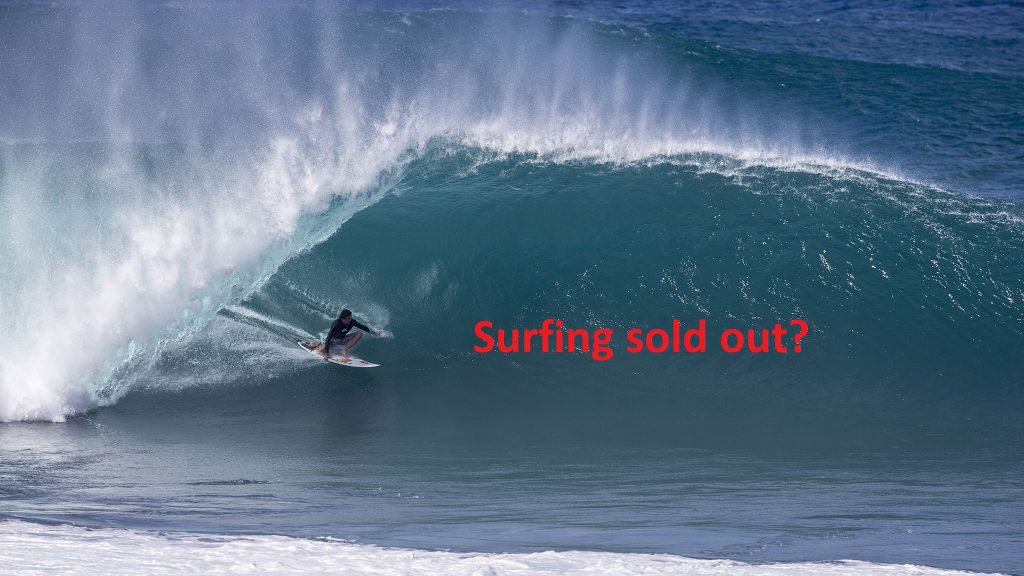News
Surfing’s sell out, and other big brand issues
Surfing has always been accused of cashing in, going mainstream, selling out and becoming less ‘core than it was. As the sport’s popularity grew through the 80s a bunch of corporates decided to jump on surfing’s bandwagon and use images of toned wave riders, shredding in the tropical sunshine, to good effect. It’s no different now. As much as sex sells so does surfing.
Industry companies as well aren’t shy of chasing the high street dollar with plenty of examples of former surfer owned businesses – especially clothing – ending up on high street shelves in chain stores. But is this really selling out or is it a case of opening up a world to the masses who wouldn’t otherwise get to experience surf culture? Or at least making them aware of its existence.
As much as there’ll always be pseudo types the true wave warrior will continue to exist. The latter may shun big brand logos in favour of more underground labels – or even rid themselves of labels full stop. The fact is, however, having high street cash injections from so called land lubbers is what helps keeps surfing as an industry alive – or at least one reason it remains so. If it was just a bunch of salt encrusted beach dwellers being relied upon for cash then surfing would’ve died years ago. After all where do you think that money comes from to get those gleaming new surf shred sticks in your mitts?

It’s sad in some ways to think that a past time like surfing has to come down to bottom line revenue figures. Unfortunately everything costs, surfing being no different – even more so for that cottage industry, one man band, shed shaper down the road. He may have perceived less overheads than the bigger players but the % outlay he/she has to foot the bill for is way more.
‘Cost’ also has a rather different overtone these days. It’s no surprise to some that our oceans are choking on plastic. The problem is potentially catastrophic and as much as surfing likes to band about its green credentials the fact is it’s as much a part of the problem as restaurants and bars handing out straws. Perhaps this problem will kick surf consumers into bringing everything back to more home grown, local perspectives and the ‘big brand’ will disappear making way for a new type of surf industry. Or maybe things will carry on as they currently are with slight tweaks to address those environmental issue touched on above. Either way there’ll always be cries of ‘sell out’ from the gallery and there’s not a lot that can be done about that.

